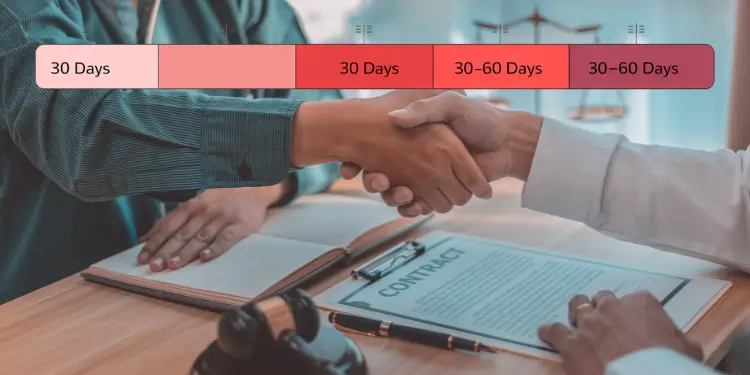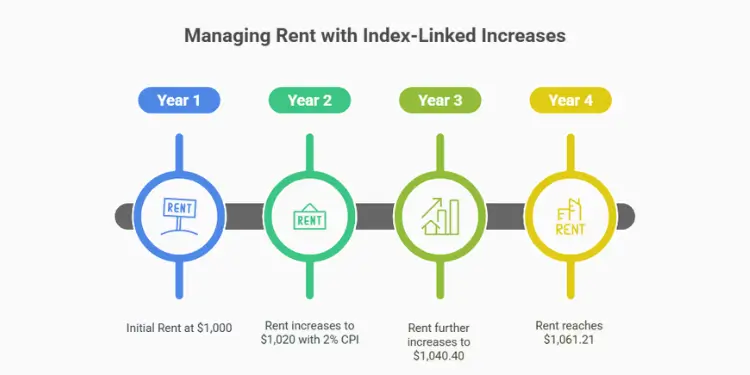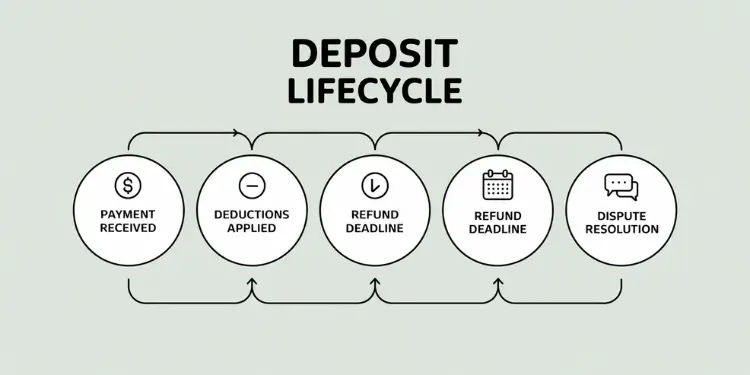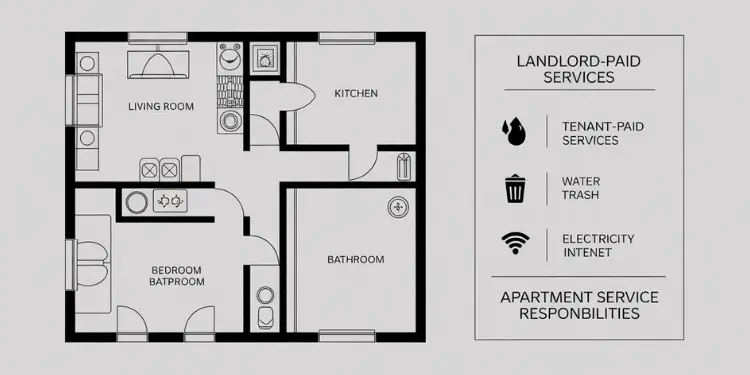Knowing the basic lease terms helps protect your rights as a tenant. It also keeps future problems away. Before you sign, check every part of your rental agreement. This makes sure both you and your landlord are treated fairly.
Did you know almost 40% of renters in the U.S. don’t read their lease agreements? Not reading it can lead to missing important parts. These parts can change who fixes things and how you get your deposit back.
“An unwritten agreement isn’t worth the paper it’s not written on,” says a seasoned tenant rights attorney. I’ve seen many disputes. A detailed lease agreement is key to a happy home life.
A comprehensive lease agreement delineates tenant and landlord obligations, covering authorized occupants, premises address, parking, storage, subletting, and maintenance protocols. Critical elements include lease duration (fixed-term versus automatic renewal), renewal and termination procedures, early-exit conditions, and notice periods to ensure compliance and avoid penalties. Rent escalation clauses—whether fixed increases or index-linked adjustments tied to metrics like the CPI—provide transparent mechanisms for periodic rent revisions. Security deposit provisions specify allowable deductions, documentation requirements, statutory return deadlines, and dispute-resolution channels, safeguarding both parties’ financial interests.
Utility and service allocations must be clearly defined—typical arrangements have landlords covering water, sewer, and trash, while tenants handle electricity, gas, and internet—to prevent billing disputes. Maintenance responsibilities split routine tenant upkeep (cleaning, minor repairs, reporting issues) from landlord-managed major repairs above specified cost thresholds. Entry notification procedures establish minimum notice (usually 24–48 hours) for non-emergency access, while emergency entry clauses permit immediate access under imminent-risk conditions. Clear articulation of these technical terms minimizes future conflicts and upholds statutory compliance.
Key Takeaways:
- Identify all authorized occupants and the full address of the rental unit.
- Review specifics like parking and storage arrangements.
- Understand rules on subletting, maintenance, and illegal activities.
- Ensure clear expectations to minimize future disputes.
Lease duration renewal and termination guidelines
Lease agreements can be tricky to understand. They cover how long you’ll rent, renewal rules, and when you can stop renting. Knowing these parts is key to your rights and money matters. We’ll look at automatic renewals, fixed terms, and early exit rules to help you.
Automatic renewal versus fixed term selection
Leases might have automatic renewal parts. This means your lease keeps going unless you or the landlord stop it. It’s handy but watch the notice times to avoid being stuck.

A fixed term lease ends on a set date unless you both agree to keep it going. It’s good for knowing exactly when you’ll leave.
- Pros of automatic renewal: No need to renegotiate; stability in living arrangement.
- Cons of automatic renewal: Could trap you into an unwanted extended lease term.
- Pros of fixed term: Clear end date, providing flexibility at lease end.
- Cons of fixed term: Requires proactive lease renewal discussions.
According to the U.S. Bureau of Labor Statistics, 59.6% of leases in early 2022 were fixed 12-month agreements, making them the most common lease term Ref.: “Bureau of Labor Statistics. (2022). Spotlight on Statistics – Housing Leases in the U.S. Rental Market. BLS” [!]
Early end conditions and notice periods

Leases also have rules for ending early. These say when and how you can stop renting early. Life changes like moving for work or military duty are common reasons. Make sure to follow the notice times to avoid extra costs or legal trouble.
| Condition | Common Notice Period | Potential Penalties |
|---|---|---|
| Military deployment | 30 days | None, under the Servicemembers Civil Relief Act (SCRA) |
| Job relocation | 30-60 days | 1-2 months’ rent |
| Health emergencies | 30 days | Negotiable or per state law |
Check your lease often and talk to your landlord. This helps with renewals and ending early. Reading these parts carefully can save you a lot of trouble and money.
Rent amount adjustment and escalation clauses
It’s key to know about escalation clauses in your lease. These clauses let the rent amount change over time. This keeps the monthly rent fair, based on the economy.
One way to change rent is through an index linked rent increase. This ties rent changes to an economic index, like the Consumer Price Index (CPI). It makes things clear and helps both sides avoid big money surprises.
Index linked rent increase calculation
An index linked rent increase changes the monthly rent based on an index. For example, if the lease uses CPI, rent goes up or down with CPI changes. This keeps rent in line with inflation without sudden jumps for tenants.

Here’s a simple table showing how this works with a 2% annual CPI change:
| Year | Initial Rent Amount | CPI Change | New Monthly Rent |
|---|---|---|---|
| Year 1 | $1,000 | 2% | $1,020 |
| Year 2 | $1,020 | 2% | $1,040.40 |
| Year 3 | $1,040.40 | 2% | $1,061.21 |
Escalation clauses help both landlords and tenants. Landlords know their costs will rise with the economy. Tenants can plan for rent increases. These rules are in the lease agreement under payment terms, making things clear and avoiding fights.

Escalation clauses tied solely to CPI can lead to substantial rent increases when inflation spikes, potentially exceeding tenants’ budget expectations Ref.: “Hill Dickinson Team. (2016). Five FAQs: index-linked rents. Hill Dickinson” [!]
Security deposit collection, holding, and refund rules
Security deposits protect landlords but have rules for both sides. It’s important to follow these rules to avoid problems. This way, both tenants and landlords are treated fairly.

Allowed deductions and documentation requirements
Landlords can take back the deposit for damages or unpaid rent. They must list each deduction clearly and show proof. This proof can be repair receipts, before and after photos, or other evidence.
Statutory deadlines for deposit returns
States set time limits for returning the deposit after a tenant leaves. These times are usually 14 to 30 days. If a landlord misses this, they might face penalties or legal trouble.
Dispute resolution channels and escrow options
Disputes over the deposit can be solved through mediation or small claims court. Sometimes, the money is kept in escrow until settled. It’s good for tenants and landlords to know about these options to protect their money.
Read More:
Utilities services allocation and billing responsibilities
It’s important to know who pays for what in a lease. This helps avoid surprises and fights. Tenants need to know what they’re paying for. Landlords should be clear about what they cover.
Usually, landlords pay for water, sewer, and trash. But, tenants pay for electricity, gas, and internet. It’s key to say this clearly to avoid confusion.

A good plan for utilities looks like this:
| Service | Responsibility |
|---|---|
| Water | Included in Rent (Landlord) |
| Electricity | Tenant |
| Gas | Tenant |
| Trash Collection | Included in Rent (Landlord) |
| Internet | Tenant |
It’s also important to talk about what to do if a service fails. For example, who fixes a big electricity problem? Having rules helps solve problems fast and keeps things clear.
The success of a rental agreement often hinges on the clarity of utilities and service allocations, upholding expectations, and preventing unforeseen expenses.
Property maintenance obligations for tenants and landlords
It’s important to know who does what to keep rented places nice. Both tenants and landlords have duties. These should be clear in the lease to avoid fights and keep everyone happy.
Routine upkeep schedules and reporting methods
Tenants handle daily upkeep like cleaning and fixing lights. They should report small problems fast. Knowing how to report issues helps keep the place nice.
- Regular cleaning and garbage disposal
- Replacing light bulbs and batteries
- Reporting leaks, electrical issues, and appliance malfunctions
Major repair cost liability thresholds
Landlords fix big things like plumbing and electrical work. But, the lease might say tenants pay for some repairs if they cost too much. It’s key for tenants to know this to avoid surprises.
| Repair Type | Tenant’s Responsibility | Landlord’s Responsibility | Cost Liability Threshold |
|---|---|---|---|
| Plumbing Issues | Minor leaks, faucet repairs | Main line issues, water heater repairs | $200 |
| Electrical Problems | Replacing light switches, outlet covers | Rewiring, circuit breaker repairs | $250 |
| Structural Repairs | N/A | Foundation, roof repairs | $500 |
These rules and cost limits make it clear who does what. Knowing these helps everyone. It keeps places nice for renters.
“Check out the below: Quiet enjoyment clause explained for first time renters“
Entry notification procedures, emergencies, and privacy
Your lease must clearly state when the landlord can enter. This protects your privacy but also lets them do needed work. Most states say landlords must give 24 to 48 hours’ notice before entering.
This notice lets you get ready for their visit. It also stops them from showing up unexpectedly.
In emergencies like a fire, landlords can enter without notice. This is to keep everyone safe. But, they must really have an emergency to do this.
Knowing what counts as an emergency is key. It helps avoid misuse of this rule.
Leases also talk about when landlords can enter, like to show the unit or do inspections. It’s important for tenants to know these rules. This way, everyone knows their rights and duties.
Having clear rules about when landlords can enter helps avoid fights. It makes sure both sides respect each other’s space.












